Westringia fruticosa, also called Australian rosemary, originates from eastern Australia. This small bushy bush does indeed have attributes of rosemary (same botanical family Lamiaceae, small evergreen leaves with greyish tinge, flowering usually white or pale mauve, melliferous, thrives in poor, dry soil), without however the aromatic character of the rosemary we know well.
Often seen in coastal garden centres and nurseries, Westringia is in fact much more tender than our Mediterranean rosemary, and, because of its origins, tolerates sea spray and winds very well. Propagating Westringia is useful to obtain new young plants for garden. We explain how to do this by taking cuttings!
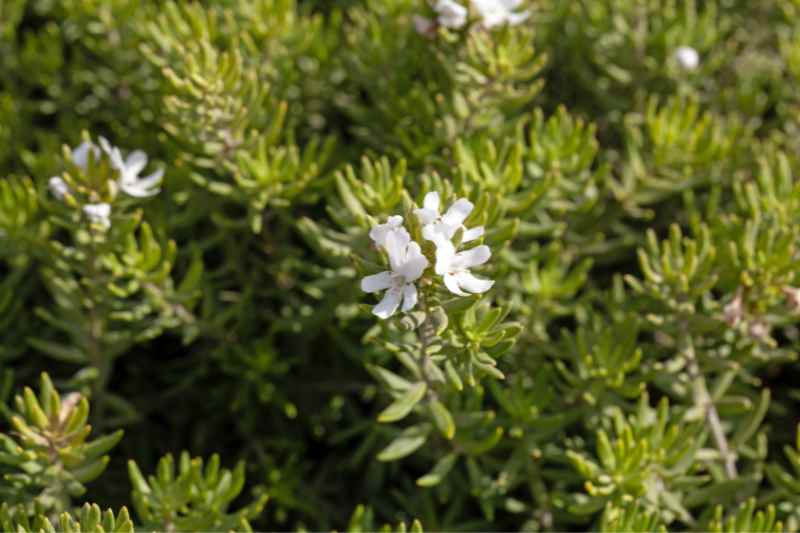
Why propagate Westringia by cuttings?
Not very hardy, Westringia is sensitive to frost. To avoid losing it in regions marginal for hardiness (read our article on Climate zones and USDA zones in France), it is useful to multiply it. On this type of very woody shrub, the best technique is to take stem cuttings: a good success rate is obtained compared with spring sowing, which proves more uncertain. Propagation by stem cuttings also allows preserving the same characteristics as the parent plant.
N.B.: I recommend reading Elisabeth's article on hardy plants and hardiness: definition, advice and practical cases.
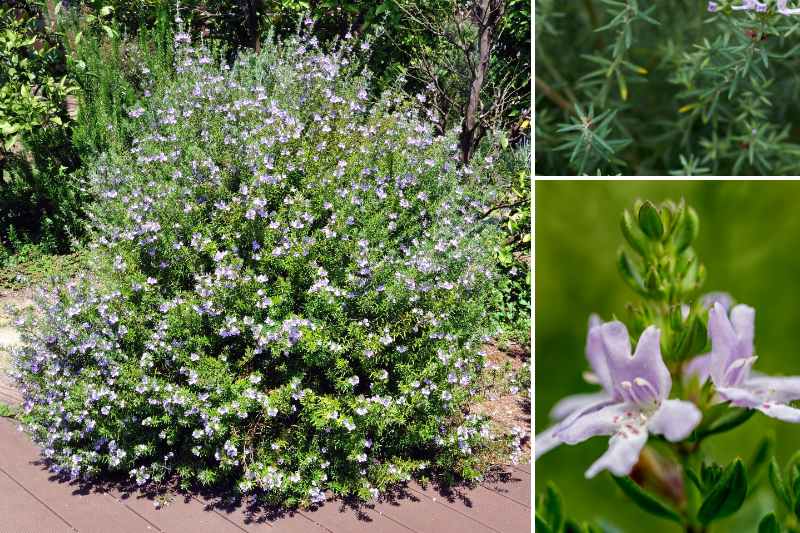
When to take cuttings of Westringia?
Propagation by cuttings of Australian rosemary is always carried out after flowering. As it flowers several times a year and for long periods, similar to common rosemary, favour summer cuttings. Either from early summer, around June, on herbaceous shoots (still soft and tender), or in late summer until September on shoots described as semi-ripe, i.e. having a lignified part (becoming like wood). For this evergreen bush, the latter technique is the easiest to succeed.
How to take a cutting of Westringia?
For Westringia, we recommend a semi-lignified cutting, preferably a cutting with heel: this involves removing a stem with the heel, the base of the shoot from which it grows. This increases chances of success on evergreen bushes.
- Late August or September, cut several lignified stem segments without flowers, about 10 to 15 cm long: they are firm and green-brown. Use a pruning shear if you are taking only stems, cutting below a node (where a shoot or leaf arises) because that is where the plant contains most plant hormones.
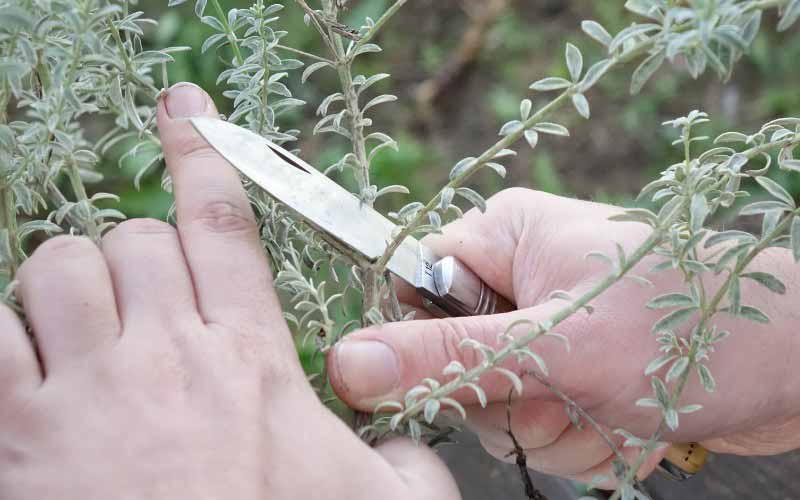
- If making a cutting with heel, take a stem (always 10–15 cm) using a knife, cutting a small piece of the shoot's bark.
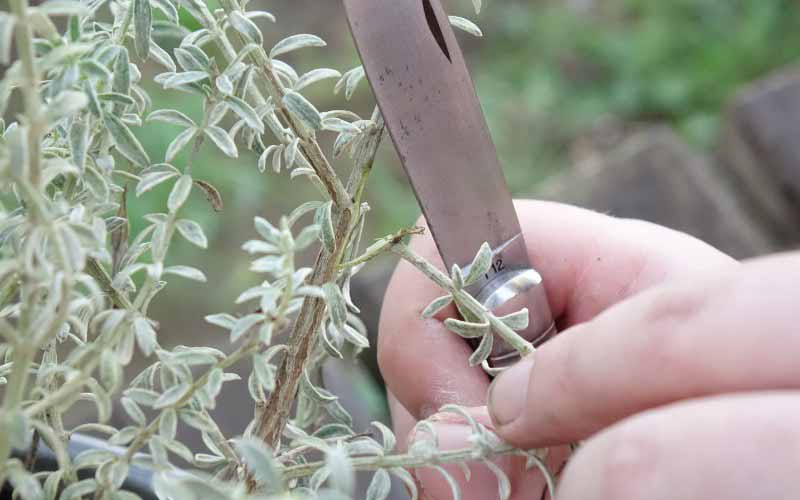
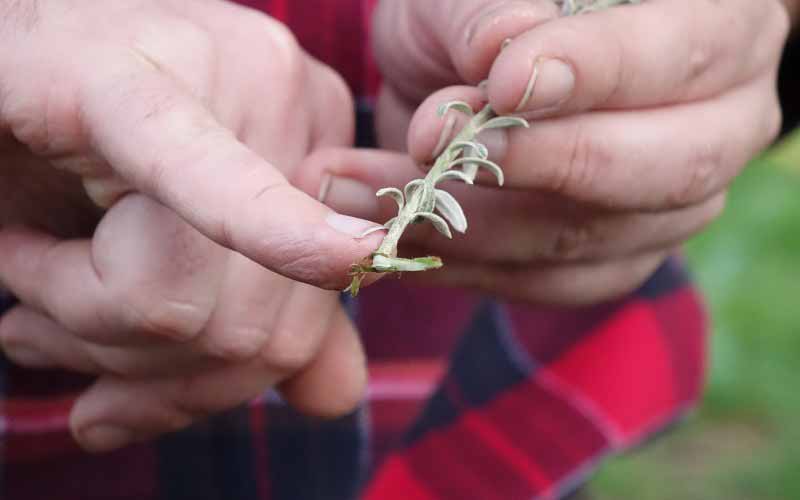
- Remove leaves from the lower part of the stem leaving only a few leaves at the top.
- Prepare a light mix made of potting compost and sand, at 50% of each to ensure good drainage. Fill pots with this mix.
- Using a pencil, make a hole in the substrate and plant each cutting in a pot (previously dipped in rooting hormone if you have some).
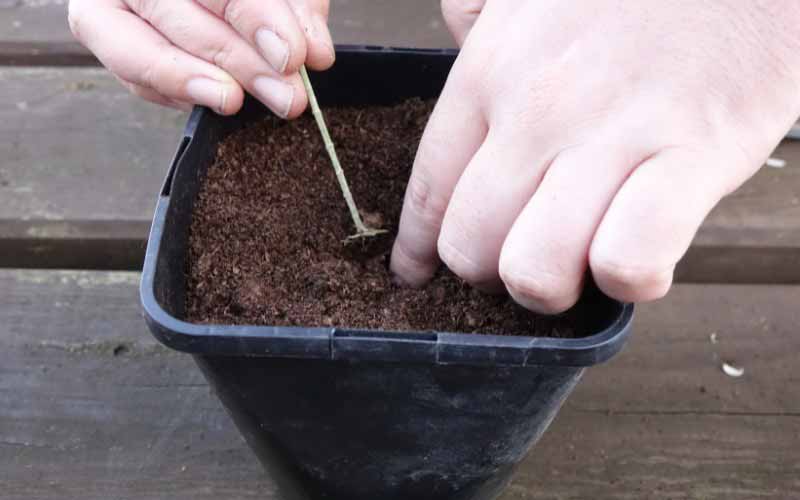
- Firm lightly with fingertips so the stem makes good contact with the substrate.
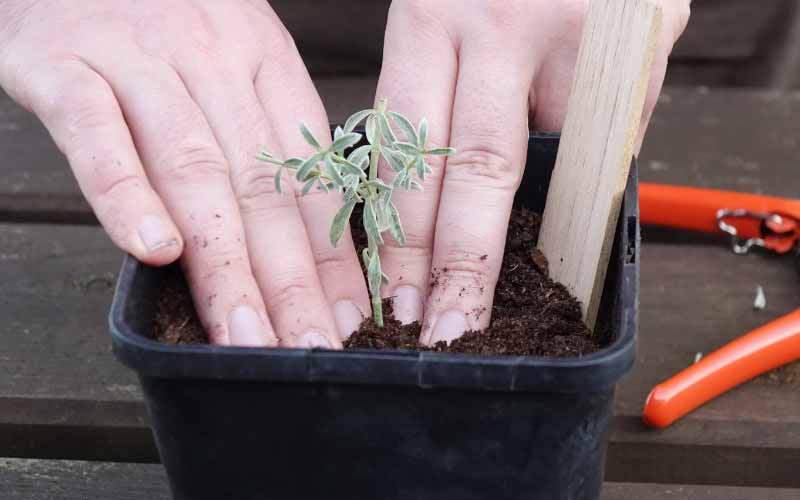
- Water using a spray bottle, or lightly with a small watering can. Substrate must remain moist but not waterlogged.
- At this stage you can cover each pot with an inverted plastic bottle or a cloche, to take a cutting under cover.
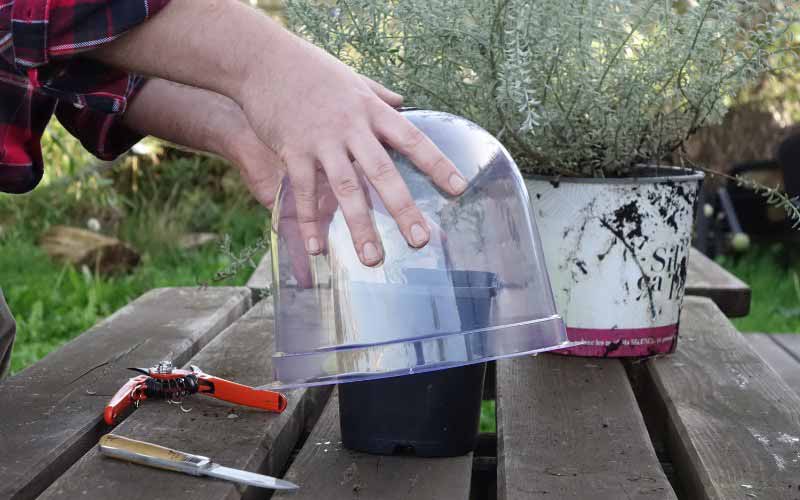
- Keep substrate moist and place pots frost-free, in a bright spot, but without direct sun. Label pots.
- Roots should start to develop after a few weeks.
- When plant develops leaves, pot up your cuttings into slightly larger pots before transferring them to garden the following spring.
Transplanting cuttings
Ideally transplant cuttings in spring. This can be done in autumn only in the most favourable coastal regions in terms of climate (Mediterranean fringe and Atlantic coast protected from frost).
Materials needed
- A pruning shear or a knife, clean and sharp, thoroughly cleaned and disinfected
- Pots with a mix of seed compost or a sieved potting compost, light and well drained with at least 1/4 sand
- Rooting hormone (facultative)
- Spray bottle
- Labels
For further reading
Find all our Westringia varieties in our online nursery
You will learn everything you need to know about different techniques of propagation by cuttings with Alexandra's advice.
Virginie tells you much more about Westringia in the full file: Westringia: planting, growing and care.































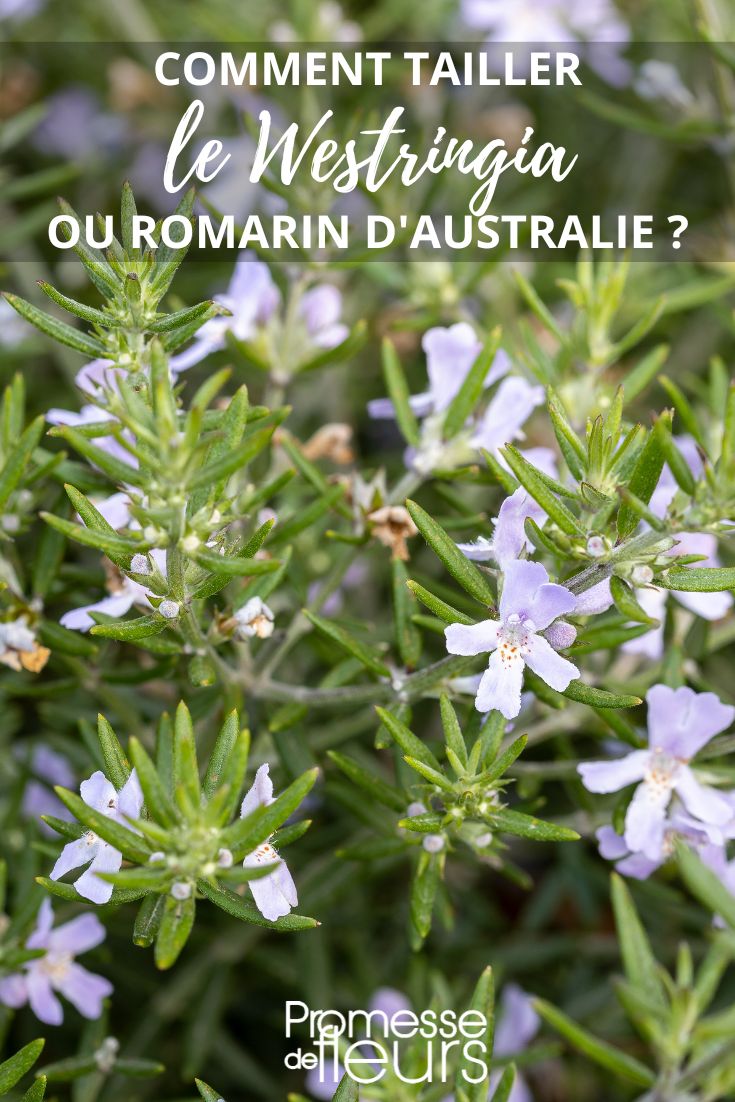
Comments